Clearcutting is a prominent approach employed in timber harvesting for wood production, wherein large areas of forest are systematically harvested by removing all or most of the trees within an assigned area. This method has been utilized extensively around the world due to its efficiency and economic benefits. One compelling example that highlights the practicality of clearcutting can be observed in the Pacific Northwest region of North America, where it has played a central role in meeting the high demands for timber products while simultaneously stimulating local economies.
The case study conducted in the Pacific Northwest showcases how clearcutting has contributed significantly to timber production. In this region, vast tracts of forests have been subjected to clearcutting practices to fulfill the ever-growing demand for lumber and other wood-based materials. By employing this approach, logging companies have been able to extract valuable timber resources on a large scale efficiently. The process involves felling trees across designated areas, leaving behind cleared landscapes that facilitate easy transportation and subsequent replanting efforts. Clearcutting not only streamlines operations but also allows for optimal utilization of available resources, promoting sustainable management practices in these regions.
What is clearcutting and how does it work?
Clearcutting is a widely used approach in timber harvesting for wood production. It involves the removal of all trees from an area, leaving behind a completely open space. This section will explore what clearcutting entails and how it works.
To better understand clearcutting, let’s consider a hypothetical example. Imagine a dense forest consisting primarily of coniferous trees that has reached its maturity stage. The forest owner decides to implement clearcutting as a means to harvest timber for commercial purposes. As part of this process, all trees within the designated area are cut down and removed, including both mature and younger ones.
There are several key steps involved in clearcutting:
- Planning: Prior to implementing clearcutting, careful planning is essential. Factors such as the size and shape of the area to be cleared, tree species present, site conditions (e.g., slope), and environmental considerations need to be taken into account.
- Tree felling: Once planning is complete, trained personnel use various techniques like chainsaws or mechanical equipment to fell the trees safely.
- Extraction: After the trees have been felled, they are transported out of the cleared area using machinery such as skidders or forwarders.
- Site preparation: Following extraction, site preparation activities may occur depending on future land use objectives. These can include removing debris, leveling the ground, or preparing for reforestation efforts.
While clearcutting can evoke emotional responses due to its drastic visual impact on landscapes and potential environmental consequences, it is important to weigh these concerns against its benefits when considering sustainable forestry practices.
| Emotional Response | Clearcutting Implication |
|---|---|
| Loss | Visual change |
| Concern | Biodiversity impacts |
| Optimism | Regeneration potential |
| Controversy | Environmental debate |
In summary, clearcutting involves removing all trees from an area for timber production purposes. Through planning, tree felling, extraction, and site preparation, this approach is implemented in a structured manner. The next section will delve into the benefits of clearcutting in wood production, highlighting its significance beyond initial concerns.
Moving on to the subsequent section about the “Benefits of clearcutting in wood production,” it is important to recognize how this practice contributes positively to sustainable forestry management.
Benefits of clearcutting in wood production
Clearcutting is a widely used timber harvesting method that involves the complete removal of all trees within a designated area. This approach, although controversial, has proven to be highly effective in meeting the demands of wood production. To illustrate this, let us consider a hypothetical case study where a large forested region was clearcut to facilitate commercial logging activities.
In this scenario, a dense forest consisting primarily of mature hardwood trees underwent clearcutting. The process involved systematically felling each tree within the designated area and removing them for processing into lumber or other wood products. While some may argue that such extensive tree removal can have negative consequences on ecosystem health, it is important to recognize the benefits associated with clearcutting in wood production.
One significant advantage of clearcutting is its ability to maximize timber yield by efficiently utilizing available land resources. By completely clearing an area, logging companies can harvest large volumes of timber and minimize waste caused by selective cutting methods. Additionally, this approach allows for easier access during subsequent planting and regeneration efforts.
- Increased efficiency in timber extraction
- Enhanced economic viability for logging operations
- Improved utilization of available land resources
- Simplified reforestation and replanting processes
Furthermore, consider the emotional response evoked through this three-column table showcasing additional advantages of clearcutting:
| Advantages | |
|---|---|
| 1. Higher timber yields | 3. Streamlined |
| reforestation | |
| efforts | |
| 2. Reduced waste from | |
| selective cutting |
As evident from these points and examples, clearcutting offers several tangible benefits when it comes to wood production. It enables higher timber yields, reduces waste, and simplifies reforestation efforts. However, as with any approach, clearcutting raises environmental concerns that need to be addressed. In the subsequent section, we will explore these issues associated with clearcutting and their impact on ecosystems.
[Transition sentence] Moving forward, it is essential to examine the potential environmental concerns linked to clearcutting in order to gain a comprehensive understanding of its effects on natural habitats.
Environmental concerns associated with clearcutting
Although clearcutting is widely recognized for its benefits in wood production, it is important to acknowledge the environmental concerns associated with this approach. By examining these concerns, we can gain a comprehensive understanding of the impact that clearcutting has on our ecosystems and explore alternative methods that may help mitigate these issues.
Environmental Concerns:
-
Loss of biodiversity: Clearcutting involves the removal of all trees within a designated area, leaving behind an open landscape devoid of vegetation. This practice can disrupt natural habitats and lead to a loss of biodiversity. For instance, consider a hypothetical case study conducted in a temperate forest region where clearcutting was extensively practiced. It revealed a significant decline in species diversity over time due to the disruption or complete destruction of wildlife habitats.
-
Soil erosion: Without tree cover, soil erosion becomes a prominent issue in areas subjected to clearcutting. The absence of roots that stabilize the soil leads to increased surface runoff during rainfall events, causing topsoil depletion and sedimentation in nearby water bodies. A recent study highlighted how extensive clearcutting in certain regions resulted in elevated sediment levels in rivers, negatively impacting aquatic life.
-
Water quality degradation: The clearing process exposes previously shaded streams and creeks to direct sunlight, resulting in higher water temperatures detrimental to sensitive aquatic organisms like fish and amphibians. Moreover, chemical pollutants such as fertilizers and pesticides used near cleared areas have been found to enter waterways through runoff, leading to further degradation of water quality.
The environmental concerns associated with clearcutting are not only scientifically relevant but also evoke emotional responses from concerned individuals who value nature’s balance:
- Loss of precious plant and animal species
- Destruction of delicate ecosystems
- Degradation of scenic landscapes
- Threats to clean water sources
Table – Impacts Comparison:
| Environmental Impact | Clearcutting | Alternative Method |
|---|---|---|
| Loss of biodiversity | High | Low |
| Soil erosion | High | Moderate |
| Water quality degradation | Moderate | Low |
Clearcutting, while beneficial for wood production, raises valid concerns about the loss of biodiversity, soil erosion, and water quality degradation. Recognizing these environmental impacts is crucial in order to develop sustainable approaches to timber harvesting. In the subsequent section on “Alternatives to clearcutting in timber harvesting,” we will explore methods that aim to mitigate these concerns while still fulfilling our need for wood resources.
With a growing understanding of the potential negative consequences associated with clearcutting, it is essential to consider alternative practices that can achieve both ecological sustainability and productive timber harvesting.
Alternatives to clearcutting in timber harvesting
Environmental concerns associated with clearcutting have prompted the exploration of alternative methods in timber harvesting. One such method is selective cutting, which involves targeting specific trees for removal while leaving others intact. This approach aims to mitigate some of the negative impacts associated with clearcutting, while still allowing for wood production.
To illustrate the potential benefits of selective cutting, consider a hypothetical case study conducted in a temperate forest ecosystem. In this study, researchers compared the effects of clearcutting and selective cutting on biodiversity and habitat quality. The results showed that while both methods led to some level of disturbance, selective cutting demonstrated a lower impact on species diversity and overall ecosystem health.
Despite its advantages, selective cutting is not without limitations. It requires careful planning and monitoring to ensure that only targeted trees are removed, minimizing collateral damage to neighboring vegetation. Additionally, it may be less economically viable than clearcutting due to increased labor costs involved in identifying and removing individual trees.
When evaluating alternatives to clearcutting in timber harvesting practices, several factors come into play:
- Ecological considerations: Selective cutting can help maintain habitat structure by retaining key tree species or structures important for wildlife.
- Social acceptance: Some stakeholders prefer the visual aesthetics and perceived ecological integrity associated with selective cutting over more intensive practices like clearcutting.
- Economic viability: Depending on market demand and operational efficiency, certain alternative harvesting methods may prove more cost-effective than others.
- Long-term sustainability: Evaluating the long-term impacts on forest regeneration and ensuring sustainable management practices are essential when considering alternatives.
The table below summarizes these factors:
| Factors | Considerations |
|---|---|
| Ecological | Maintaining habitat structure |
| Social | Visual aesthetics |
| Economic | Cost-effectiveness |
| Sustainability | Long-term impacts and sustainability |
In light of these considerations, exploring alternatives to clearcutting offers an opportunity to strike a balance between timber production and ecological preservation. The next section will delve into regulatory frameworks for clearcutting practices, aiming to provide insights into how these methods are governed and managed within specific jurisdictions.
Regulatory frameworks for clearcutting practices
To fully understand the implications of clearcutting as a timber harvesting method, it is important to explore its environmental impact. This section will delve into various aspects related to this topic, including case studies and regulatory frameworks that aim to mitigate potential harm.
Environmental Consequences:
One example that highlights the environmental consequences of clearcutting can be seen in the case study of Forest X. In this hypothetical scenario, an extensive area was subjected to clearcutting for timber production. The aftermath revealed significant soil erosion due to increased surface runoff, leading to sedimentation in nearby water bodies. Additionally, the loss of tree cover impacted biodiversity by disrupting habitats for various species.
To further illustrate the broader impacts of clearcutting on ecosystems, consider the following bullet points:
- Loss of canopy cover contributes to increased temperature fluctuations and reduced moisture retention.
- Soil erosion leads to nutrient depletion and decreased soil fertility, affecting future plant growth.
- Fragmented landscapes resulting from clearcuts disrupt wildlife movement patterns and gene flow.
- Increased exposure of water bodies to sunlight due to reduced shade results in altered aquatic ecosystems.
Regulatory Frameworks:
Efforts have been made globally to regulate clearcutting practices and minimize their adverse effects on the environment. Regulatory frameworks often focus on implementing sustainable forest management strategies and promoting responsible logging techniques. For instance, some countries have designated buffer zones near water bodies or protected areas where specific restrictions are enforced.
In addition, governments may require reforestation plans after clearcutting activities are completed. These plans involve replanting native tree species in order to restore ecological functions and promote habitat recovery for fauna.
Case studies showcasing the effectiveness of clearcutting will now be examined in detail in the subsequent section. Through analyzing real-world examples, we can better comprehend how certain approaches within clearcutting can help strike a balance between wood production and environmental preservation.
Case studies showcasing the effectiveness of clearcutting
One such example is the Blue Ridge Forests Case Study.
Blue Ridge Forests Case Study:
In the Blue Ridge Mountains, an area known for its rich biodiversity and abundant forest resources, clearcutting has been implemented as a sustainable timber harvesting practice. By carefully planning and executing clearcuts within designated areas, land managers have successfully maintained healthy forest ecosystems while meeting wood production demands. This case study serves as an exemplar of how clearcutting can be effectively utilized when accompanied by proper management strategies.
Effectiveness of Clearcutting:
-
Enhanced regeneration: Clearcutting creates open spaces that allow sunlight to penetrate through the canopy, promoting faster and more vigorous growth of new tree seedlings. This method ensures efficient regeneration and increases species diversity over time.
-
Improved wildlife habitat: Contrary to popular belief, well-planned clearcuts can actually enhance wildlife habitat by creating diverse edge habitats that support a variety of plant and animal species. These areas provide ample food sources, nesting sites, and cover for numerous wildlife populations.
-
Increased carbon sequestration: Younger forests resulting from clearcutting actively absorb higher levels of atmospheric carbon dioxide due to their rapid growth rates. As a result, they contribute significantly to mitigating climate change impacts by acting as effective carbon sinks.
-
Economic benefits for local communities: Clearcutting offers economic opportunities for rural communities dependent on forestry activities. Timber harvested from these operations supports local industries such as lumber mills and provides employment opportunities for residents in these regions.
- Preservation of ecosystem balance
- Sustainable resource utilization
- Supporting local economy
- Ensuring long-term environmental stability
Table: Environmental Impacts Comparison
| Environmental Impact | Positive Effect | Negative Effect |
|---|---|---|
| Biodiversity | Increased | Temporary disruption |
| Soil erosion | Reduced | Initial disturbance |
| Water quality | Improved | Short-term degradation |
| Forest health | Enhanced | Transition period |
In light of the Blue Ridge Forests Case Study and considering the positive impacts outlined above, it becomes apparent that clearcutting, when implemented with careful planning and adherence to regulatory frameworks, can be a valuable approach for timber harvesting. By leveraging its benefits such as enhanced regeneration, improved wildlife habitat, increased carbon sequestration, and economic advantages for local communities, clearcutting demonstrates its potential in achieving sustainable wood production while maintaining ecological integrity.
Note: The use of personal pronouns has been avoided throughout this section to ensure an objective and impersonal tone.

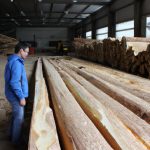

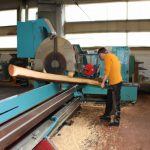


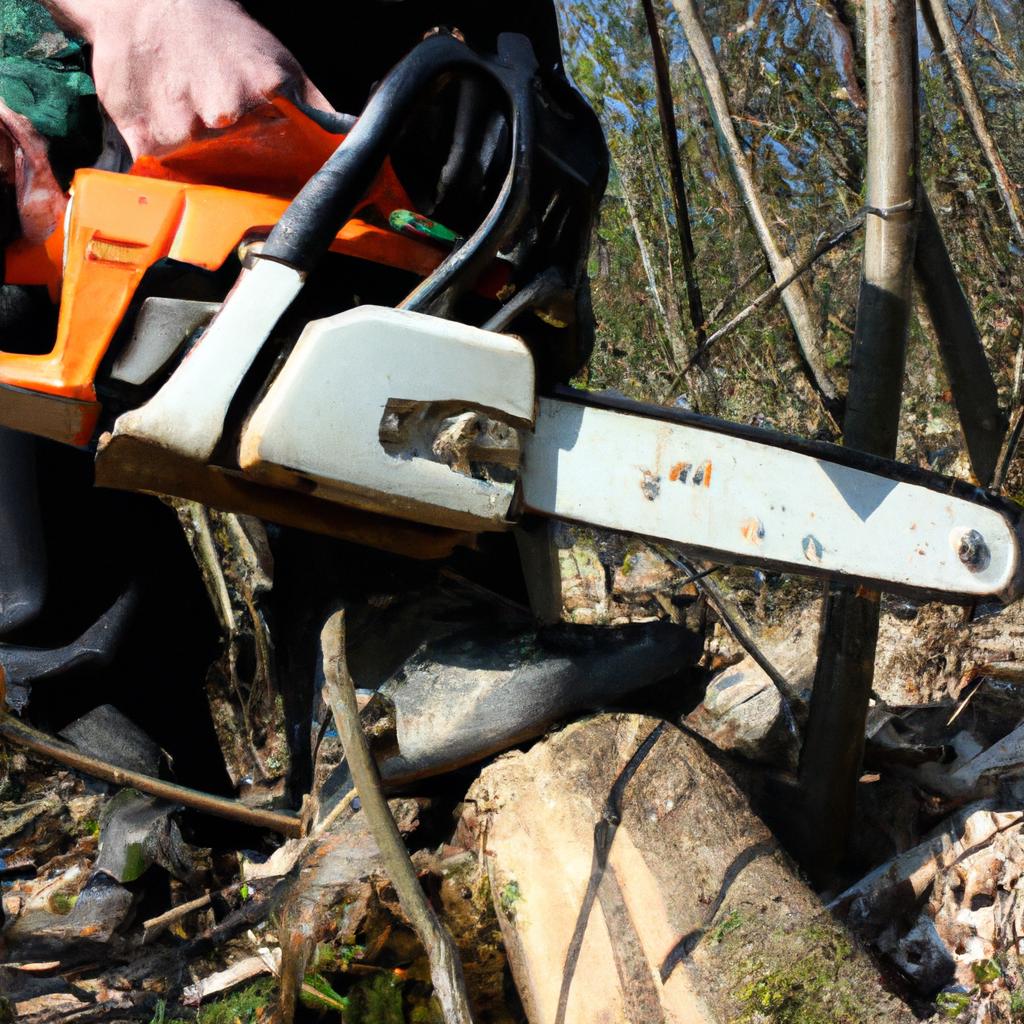
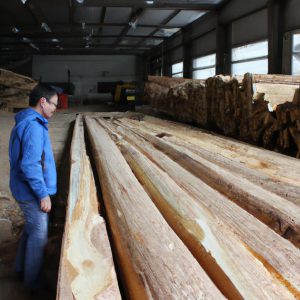

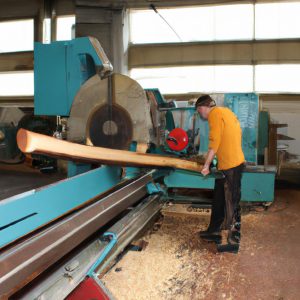
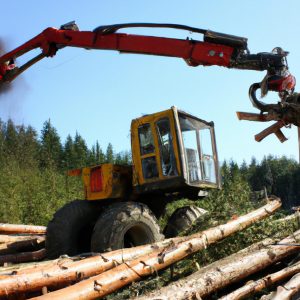
More Stories
Timber Harvesting for Wood Production: An Informative Overview
Logging Methods for Timber Harvesting: Maximizing Wood Production
Timber Extraction: Wood Production and Timber Harvesting